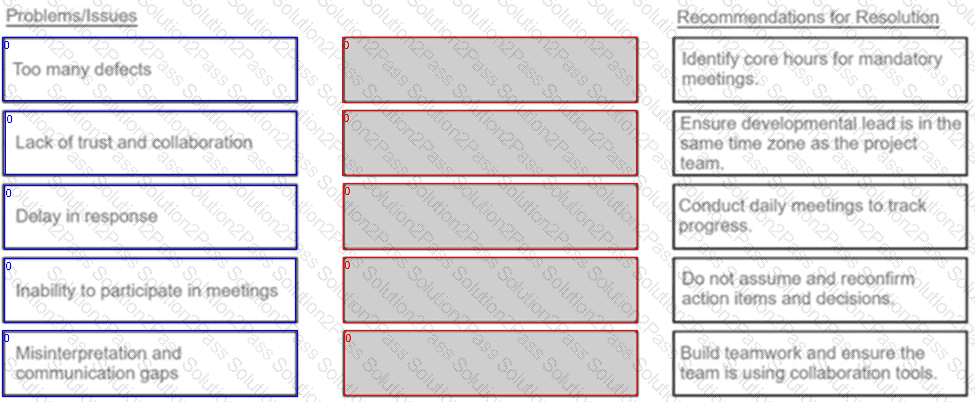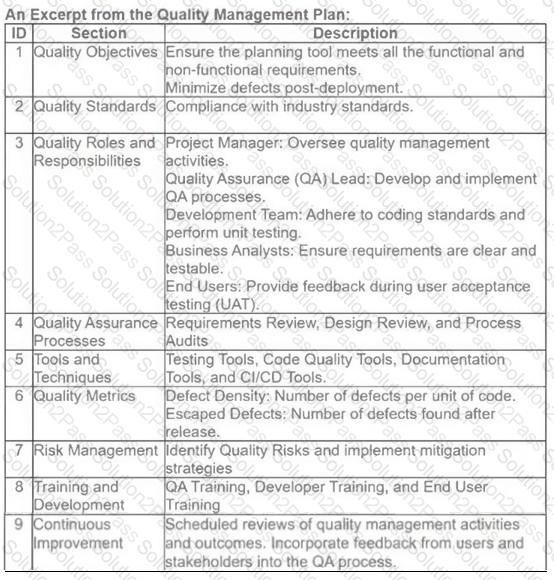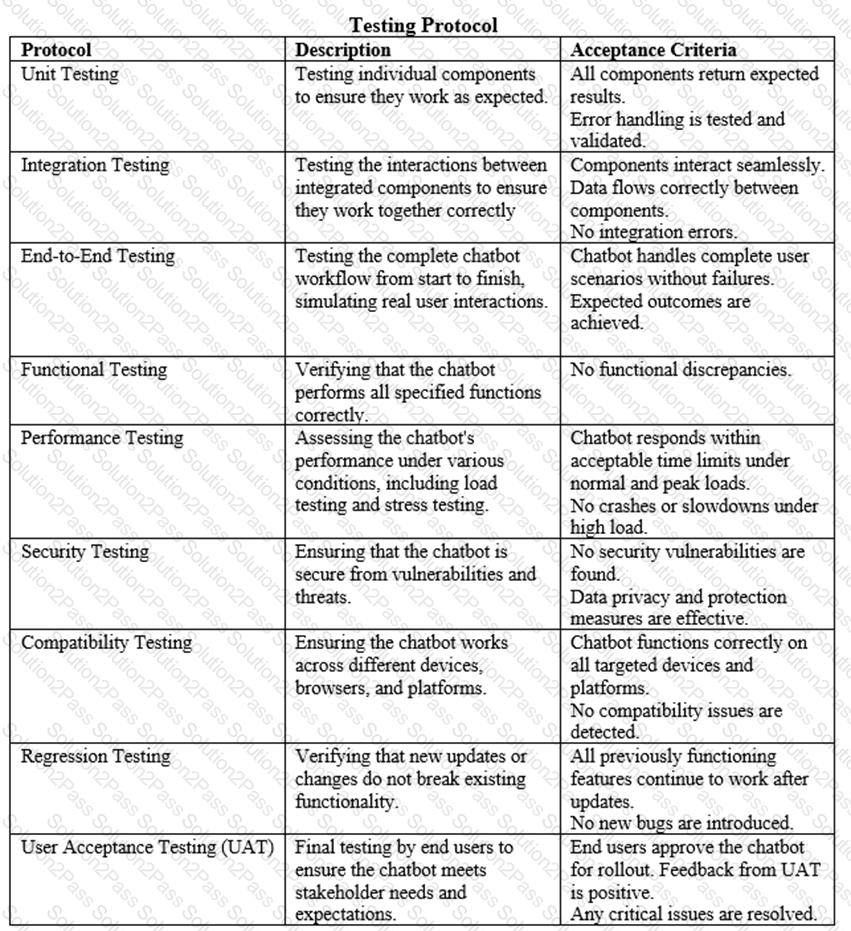PMI-ACP PMI Agile Certified Practitioner (PMI-ACP) Free Practice Exam Questions (2025 Updated)
Prepare effectively for your PMI PMI-ACP PMI Agile Certified Practitioner (PMI-ACP) certification with our extensive collection of free, high-quality practice questions. Each question is designed to mirror the actual exam format and objectives, complete with comprehensive answers and detailed explanations. Our materials are regularly updated for 2025, ensuring you have the most current resources to build confidence and succeed on your first attempt.
In companies where decision-making is driven by data analytics and unknown variables are addressed, what advantages does agile project execution offer over a predictive approach?
When working on a new product, what should an agile team do to ensure alignment with external stakeholders?
DRAG DROP
All the developers on a project team are working offshore in a different time zone, resulting in many issues. Match the issues to the agile practitioner's recommendations for resolutions below. (Drag the Problems/Issues on the left to the box in the center, corresponding to the correct Recommendations for Resolution on the right)

A scrum master of a team that is new to Scrum wants to share the purpose of the daily coordination meeting. What should the scrum master tell the team?
During its first sprint, a new Scrum team realizes that it has insufficient team members with test automation skills to effectively complete its stories.
What should the team do?
During sprint planning, the product owner wants the team to prioritize and deliver a number of features that have the highest business value. Due to technical dependencies, the team does not agree with the prioritization.
What should the project leader do?
Halfway through the execution of an agile project, a retrospective meeting is held. One of the team members believes that the actual time and cost to complete the work has consistently been greater than what was originally estimated.
Which of the following activities should be performed next?
In Scrum, the responsibilities of the project manager are shared among the product owner, scrum master, and development team. Why are responsibilities shared among the three roles?
What should the product owner have done differently?
What should the project leader do?

In a project to develop a supply-and-demand scenario planning tool, the team aims to streamline development and rapidly deliver features. Which approach best supports quick feature delivery while maintaining quality? (Refer to An Excerpt from the Quality Management Plan)
A project manager is working on a user story about migrating to a new version of a database but is unsure of the dependencies. What can the product owner request from the team to understand the risks?

A scrum master is overseeing the launch of a chatbot for the service desk. Complaints come up post-release about edge case responses to queries. After analyzing the issues, the business decision was made to take the chatbot offline, resulting in workflow disruptions and risking the reputation.
How could this situation have been avoided? (Refer to Testing Protocol Table)
What action should the product owner take?
What should the agile practitioner do?
HOTSPOT
Organizations that implement agile project management focus on upgrading existing products and services through cost reductions, time savings, or quality enhancements for existing customers (i.e., operational agility). Organizations need to realize that the major financial gains from agile project management will result from the practice of what? (Select answer from dropdown)

What should the agile project manager do?
An agile leader has been assigned to a project that involves significant technical complexity. What should the agile leader do to set the project up for success?
What should the project leader suggest?

 The product owner manages the product backlog, ensures alignment with business goals, and defines the priorities for the team.
The product owner manages the product backlog, ensures alignment with business goals, and defines the priorities for the team. The scrum master facilitates the Scrum process, removes impediments, and ensures adherence to Agile principles.
The scrum master facilitates the Scrum process, removes impediments, and ensures adherence to Agile principles. The development team owns the sprint backlog and is responsible for incremental delivery toward the sprint goal.
The development team owns the sprint backlog and is responsible for incremental delivery toward the sprint goal.
